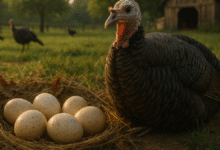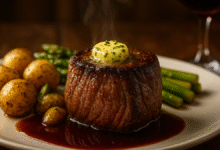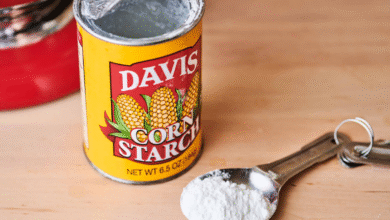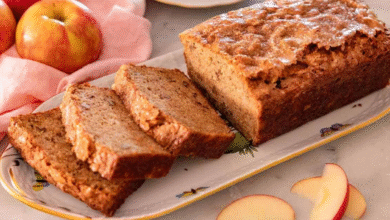Kielbasa Sausage: A Complete Guide to Flavor, Tradition, and Cooking

Discover the rich flavor and history of kielbasa sausage. Learn its origins, varieties, recipes, and cultural significance in this complete guide.
Kielbasa sausage is more than just food—it’s a story of tradition, heritage, and timeless flavor. Rooted deeply in Polish culture, this hearty sausage has made its way into kitchens and restaurants around the world. Today, whether you’re savoring it in a rustic countryside stew, grilling it at a summer barbecue, or pairing it with your favorite craft beer, kielbasa sausage continues to prove why it’s loved across generations.
From its cultural origins in Poland to its modern variations in international cuisines, kielbasa sausage has earned a permanent place in the heart of food lovers. This guide dives into its history, preparation, recipes, and cultural impact—so you’ll not only enjoy eating kielbasa sausage, but also understand why it is such an iconic dish.
The Origins of Kielbasa Sausage
Kielbasa, the Polish word for sausage, holds centuries of history. Unlike generic sausages, kielbasa sausage carries a strong cultural identity tied to family recipes, celebrations, and regional traditions.
A Cultural Staple in Poland
Poland has long been known for its meat preservation traditions. Long before refrigeration, sausages like kielbasa were a way to ensure protein lasted through harsh winters. Smoked and spiced, kielbasa sausage became a staple on Polish tables. Every region in Poland developed its own variation—garlicky, spicy, smoked, or mild—depending on available spices and local preferences.
The word kielbasa itself simply means “sausage” in Polish, but outside Poland, it has come to mean a specific type: the plump, garlicky, smoked variety that is beloved worldwide. For many Polish families, kielbasa sausage is a food of celebration, often featured during Christmas, Easter, and weddings.
Immigration and Global Spread
When Polish immigrants came to the United States in the late 19th and early 20th centuries, they brought their culinary traditions with them. Kielbasa sausage quickly found its way into American delis, butcher shops, and kitchens. Over time, regional adaptations developed—some versions sweeter, some spicier, some infused with local woods for smoking.
Today, kielbasa sausage can be found in nearly every grocery store, from big-box retailers to specialty European markets. Its versatility makes it a universal favorite, while its cultural significance keeps its authenticity alive.
Varieties of Kielbasa Sausage
Not all kielbasa sausages are the same. While many people picture the classic smoked Polish sausage, the reality is that there are dozens of styles.
Fresh vs. Smoked Kielbasa
- Fresh Kielbasa (Biała Kielbasa):
This is unsmoked, pale in color, and often sold raw. It requires cooking before eating, typically simmered, boiled, or grilled. Fresh kielbasa sausage is a star of Easter breakfasts in Poland, often served alongside eggs, horseradish, and soups. - Smoked Kielbasa (Kiełbasa Wędzona):
This variety has a rich, smoky flavor thanks to wood-smoking methods. It’s pre-cooked, which makes it convenient for slicing, frying, or grilling. Smoked kielbasa sausage is what most people in the U.S. associate with the term.
Regional Variations
- Kiełbasa Wiejska (Farmhouse Sausage): Known for its coarser grind and strong garlic flavor.
- Kiełbasa Krakowska: A delicacy from Kraków, usually thick, smoked, and served cold in slices.
- Kiełbasa Mysliwska (Hunter’s Sausage): A long-lasting, heavily smoked version ideal for travel.
Each type has its own preparation methods and flavor notes, making kielbasa sausage endlessly diverse.
How Kielbasa Sausage is Made
Kielbasa sausage starts with simple, high-quality ingredients, but the art lies in the preparation.
Ingredients That Matter
Traditionally, kielbasa sausage is made with pork, although beef, veal, or poultry may also be used. Garlic is a signature seasoning, often joined by marjoram, black pepper, and sometimes nutmeg. Salt is essential—not just for taste but also for preservation.
The Process of Crafting Kielbasa Sausage
- Meat Selection: Pork shoulder is a common cut, valued for its fat-to-meat ratio.
- Grinding: The meat is ground coarsely, ensuring a rustic texture rather than a uniform paste.
- Seasoning: Garlic and spices are mixed in, giving kielbasa sausage its iconic depth.
- Stuffing: The seasoned mixture is stuffed into natural casings, usually pork intestines.
- Smoking or Cooking: Depending on the type, the sausages are smoked over hardwoods, boiled, or left fresh for later cooking.
“Good kielbasa sausage is about balance—enough garlic to wake the senses, enough smoke to warm the soul, and enough fat to melt in your mouth.”
Nutritional Value of Kielbasa Sausage
Like any traditional sausage, kielbasa sausage offers both indulgence and nutrition.
| Nutrient | Per 100g (Average Smoked Kielbasa) |
|---|---|
| Calories | 300–330 kcal |
| Protein | 12–14 g |
| Fat | 25–28 g |
| Carbs | 1–3 g |
| Sodium | 800–1,200 mg |
Kielbasa sausage is protein-rich but also higher in fat and sodium. This makes it a hearty, satisfying food best enjoyed in moderation. Pairing it with vegetables or whole grains can balance its richness.
Cooking Kielbasa Sausage
The beauty of kielbasa sausage lies in its versatility.
Pan-Frying and Grilling
Smoked kielbasa sausage shines when grilled or pan-fried. The outer casing crisps beautifully while the inside remains juicy. Served with mustard, sauerkraut, or grilled onions, it’s a comfort food classic.
Stews, Soups, and One-Pot Dishes
Fresh kielbasa sausage often finds its home in stews and soups. Polish żurek (sour rye soup) and bigos (hunter’s stew) are iconic dishes where kielbasa sausage adds smoky, garlicky depth.
Creative Modern Uses
In recent years, chefs have experimented by incorporating kielbasa sausage into pasta dishes, flatbreads, or breakfast scrambles. Its bold flavor means even a small amount transforms a dish.
Kielbasa Sausage in Polish Culture
For Poles, kielbasa sausage is far more than a meal—it’s a cultural symbol.
Celebrations and Holidays
During Easter, white kielbasa sausage is often served with horseradish and eggs. At weddings, platters of smoked kielbasa sausage are staples. Even at everyday family gatherings, sausage remains central to the table.
Symbol of Hospitality
In Poland, offering kielbasa sausage to guests is a gesture of warmth. Sharing sausage symbolizes abundance, tradition, and community.
Modern Popularity of Kielbasa Sausage
Today, kielbasa sausage has crossed borders, entering mainstream kitchens worldwide. Food trucks sell kielbasa sandwiches, restaurants create fusion dishes, and home cooks keep it stocked for easy meals.
Its popularity thrives because it is both traditional and adaptable—classic enough to honor its roots, versatile enough to reinvent.
FAQs About Kielbasa Sausage
Q1: Is kielbasa sausage the same as Polish sausage?
Yes. The word “kielbasa” means sausage in Polish, so all Polish sausages fall under this name. However, outside Poland, “kielbasa sausage” usually refers to smoked, garlicky varieties.
Q2: Do you need to cook smoked kielbasa sausage before eating?
No. Smoked kielbasa sausage is pre-cooked and safe to eat. Many still prefer heating it for better flavor and texture.
Q3: What’s the difference between kielbasa sausage and bratwurst?
Bratwurst is German and usually fresher, milder, and less garlicky. Kielbasa sausage tends to be smokier and more seasoned.
Q4: Can kielbasa sausage be frozen?
Yes. Both fresh and smoked kielbasa sausage can be frozen. Wrap tightly in freezer-safe packaging to maintain flavor.
Q5: Is kielbasa sausage spicy?
Traditional kielbasa sausage is garlicky rather than spicy, but some modern versions include hot peppers for extra heat.
Conclusion
Kielbasa sausage is more than food—it’s heritage on a plate. Rooted in Polish tradition yet embraced worldwide, it offers endless culinary possibilities. Whether enjoyed fresh from the grill, simmered in a hearty stew, or served cold on a charcuterie board, kielbasa sausage continues to connect people through its bold flavor and rich history.





